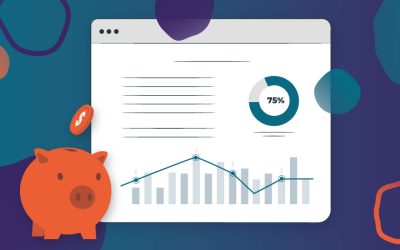Your online marketing is going well. Your visitor stats in Google Analytics have never looked better. You’re bringing in lots of traffic (the right kind) from your SEO, PPC, email or social campaigns …
… but none of this is causing a noticeable increase in revenue.
What’s going wrong? What’s stopping all of these visitors from converting into customers?
These are the kind of questions that Conversion Rate Optimisation (CRO) aims to answer.
Whatever you want your customers to do on your website – make a purchase, sign up as a member or simply get in touch – CRO tools can help remove roadblocks and increase the amount of business generated by your website.
Where do I start?
First, you need to come up with a clear definition of what qualifies as a conversion, and which conversions help you to meet your business objectives.
For example, if you’re an online store looking to increase sales, there could be many potential customer journeys that help you do this:
- Sales coming from a particular marketing channel (organic search, Facebook ads, etc.)
- Repeat sales from existing customers
- Orders taken over the phone or generated by website enquiries
- Sales on a particular category of device in a specific situation (e.g. buying building materials on mobile when working on site)
The first step is listing as many of these customer journeys as possible. After that you’ll need to prioritise them based on their potential impact to the business and select a small number to focus on initially.
If this is your first time I’d pick the one most important journey to begin with.

Effective measurement
Once you’ve decided on a conversion to focus on, you’ll need to map out the steps that result in its completion. For example, a basic website purchase might involve the following steps:
- Arrive on product page from search engine results page
- Add product to basket
- Visit basket page
- Visit checkout page
- Visit payment page
- Visit success page
A conversion funnel is a great way to visualise these steps and show exactly where in the process people are dropping off. The next job is figuring out what’s causing the drop-off and what can be done to reduce it.
The correct tool for the job is going to vary, but here are some of the most useful options:

Heatmapping – Measure clicks and scrolling on a particular page to see how engaged your users are with each part of the page. For instance, what’s grabbing their attention and what’s being ignored? (screen grab from Hotjar)

Recordings – Play back real user visits as they make their way around your website. Watch their mouse activity as they work out where to go next.

Split testing – Test a design or content change against a subset of your visitors and compare the results to the original. A different headline or a change in colour for your call to action, for example.

Analytics insights – Visitor data collected by tools like Google Analytics can provide essential information on those visiting particular pages on your site. Segment your visitors and compare statistics between customer groups. Compare the keywords they searched for to arrive at your site to see if bounce rate increases for some types of customer

Customer feedback – Collect feedback from users as they’re on the page in question. Ask about their concerns. Do they have any questions not answered by the page? You may only get a small percentage of visitors providing feedback but it’s likely to be very useful.

Surveys – If you’ve already got contact details for the customer group you’re trying to target (or even a subset of it), then a survey can be a great way to gather detailed feedback from the group on what they want and how they feel about what you’re offering.
Measure. Respond. Repeat
Whatever the results of the testing above, you should think of CRO as an ongoing process rather than a one-off project.

It’s a chance to analyse data showing how your site is performing, make a hypothesis that attempts to explain why a set of visitors aren’t converting, and then test it. This process should repeat regularly with a view to continuous, mounting improvement.
We find that monthly iterations of the process work in most situations, but the sweet spot is going to vary depending on the amount of traffic your website receives.
It’s also important to review the results of your test regularly with everyone that’s involved with the website to ensure they’re aware of what’s being tested and can offer their opinions.
If you can get your business into the cycle of regularly measuring results, responding with improvements and repeating the process on an ongoing basis you’ve got the potential to see huge improvements to your conversion rate – and your bottom line – in a long term, sustainable way.







